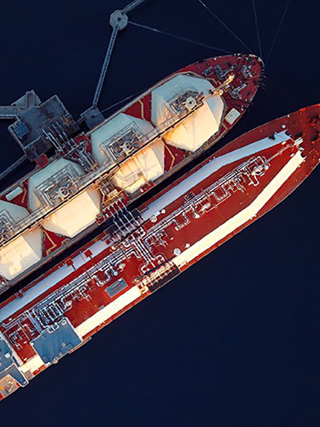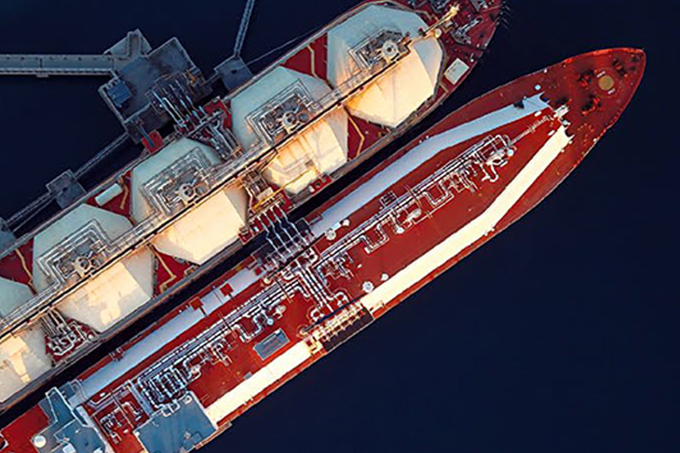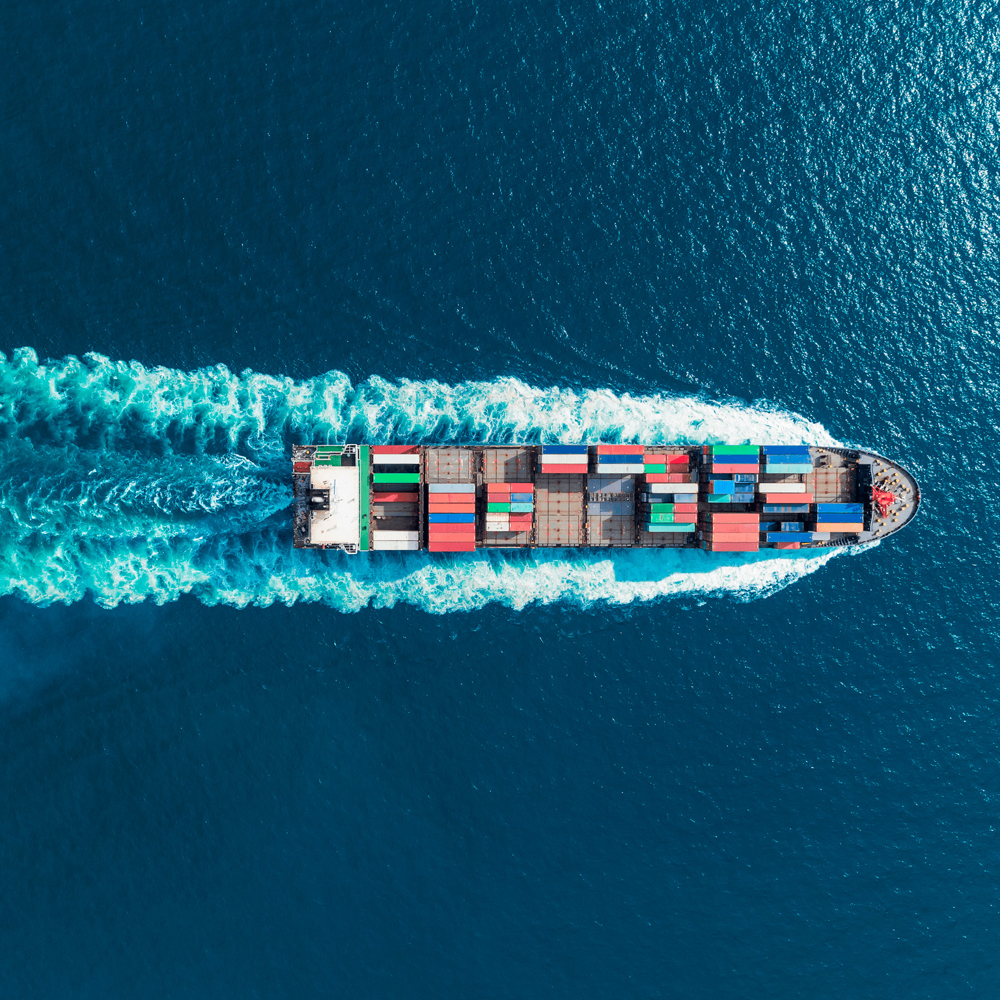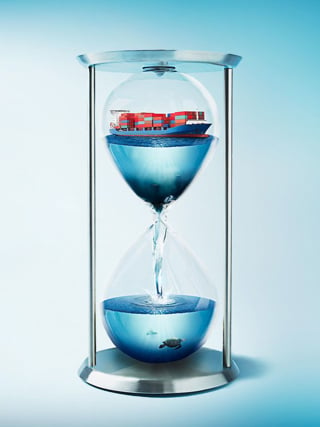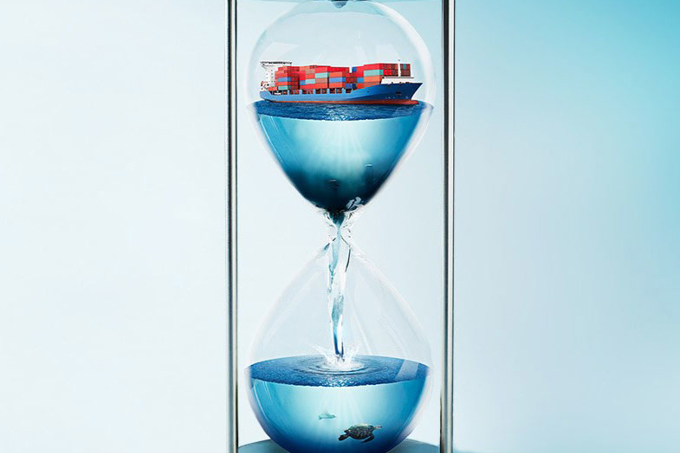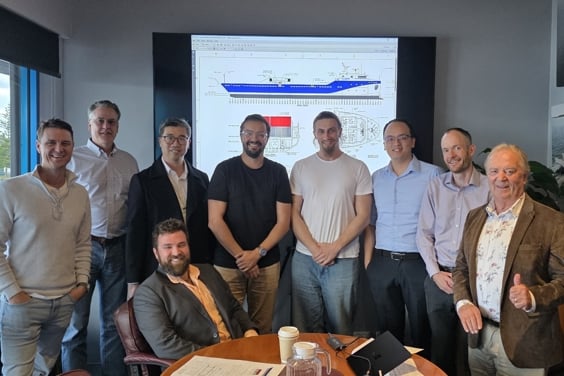Use our interactive CII calculator to review your vessel’s carbon intensity indicator rating, based on the latest IMO guidelines. You can also trial different scenarios to assess the impact on compliance status.
The whole container ship fleet will be affected by the IMO’s new carbon intensity indicator (CII) regulation from next January, but its full impact remains unclear. Clarification on how CII will be implemented in the short run, and how it may tighten as a regulation between now and 2030, is urgently required by shipowners faced with setting up compliance strategies that will necessitate significant investment.
At present, owners are left “second-guessing” the implications of CII, with older tonnage and ships trading on short-sea feeder routes most at risk of getting caught-out. Ultimately, if CII proves too onerous, a significant number of these ships will be forced to the scrap yard, compounding supply chain woes and resulting in cargo moving via other, potentially less efficient, modes of transport.
Recent figures from Clarkson Research indicate that some 12% of container vessels could fall into the lowest ‘E’ category when the CII regulation comes in next year, and up to a quarter of the container ship fleet could be rated ‘E’ by 2026. Meanwhile, close to a quarter of the fleet up to 6,000 TEU capacity is over 20 years old and many of these ships are likely to require carbon efficiency improvements, raising the question of ‘retrofit or renewal’.
At present it seems most owners are unable to define their strategy on navigating CII due to insufficient detail on the workings of the new measure. The hold-up comes at a particularly awkward time, with global supply chains under serious pressure owing to congestion and equipment shortages, not to mention rising political tension on the global stage.
Charterers wait and see
So far, the lack of clarity has left charterers taking a relatively casual approach to the imminent measure. A new clause in charterparties, for example, typically reads: “Charterers acknowledge and accept that Owners in their discretion will be at liberty to reduce the main engine power/vessel’s speeds and to do whatever else they consider necessary … to ensure that the vessel will achieve a carbon intensity rating of A, B or C at all times in accordance with CII regulations.”
However, as carbon emissions and supply chain sustainability climb the cargo owner's agendas, this loose arrangement is likely to tighten. Engine Power Limitation (EPL) may not prove sufficient, and charterers may wish to examine the phrase “whatever else they consider necessary” more closely.
As things stand, a vessel that scores a ‘D’ rating for three consecutive years or an ‘E’ rating in a single year would be prohibited from trading until such a time that the respective owner submits a corrective plan as part of the SEEMP, which would need to be ‘approved’ prior to re-commencing operations. Putting aside the unknown differential between ‘A-C’, on face value the penalty measure related to ‘D-E’ appears relatively robust. However, on closer inspection there are many significant loopholes, and as such we need the IMO to clarify the penalty enforcement process governing ‘D-E’ so that owners can fully understand the implications and risk factor.
Owners and operators urgently require a better-defined framework to trigger and inform their investment plan and fleet strategy.
Is AER a suitable metric?
The CII will be assessed on the basis of a ship’s individual annual efficiency ratio (AER). This is a measure of fuel consumed (and therefore carbon generated), nominal capacity in deadweight, and distance travelled in nautical miles. However, for many container ships, the AER is a poor measure of efficiency as it fails to factor-in operational realities that are well beyond the vessel operator or owner's remit. These trade idiosyncrasies, such as low productivity, seasonal demand, labour shortage and aged infrastructure, will cause the vessel to dwell longer at port and ultimately skip voyages, thus increasing the risk of landing in the ‘D-E’ danger zone.
My chief concern for ships deployed on short-sea service rotations is that the shorter distance and disproportionately large amount of time at port will limit their options for navigating CII regulation through operational measures, making the necessity to forward plan all-the-more pressing. In addition, increased wait-time at port is caused by a multitude of supply chain factors, which suggests that CII should encompass land-side considerations (or even stakeholders) and not land squarely on the shoulders of the vessel owner or operator.
Vicious circle?
Of course, there is also the concern that a significant volume of older tonnage, particularly in the smaller size bracket, may not warrant the scale of investment required for the carbon-efficiency upgrades to satisfy CII. This, in turn, could leave many locations, which rely on the feeder network, suffering from a lack of connectivity, not to mention superficially driving new build demand to the point of market instability, that could derail the level of green investment needed to satisfy emissions-based regulation such as CII.
The IMO’s MEPC June meeting may lead to some clarification but the nature of container ship operation – long-haul trades versus feeder services, for example – are unlikely to be considered. In my view, there needs to be clarity on the practical enforcement and implications attached to the different CII ratings. In addition, there needs to be a clearer indication on how CII will escalate towards 2030 with consideration given to varying trade dynamics and ship type.
I think it’s unlikely we’ll be getting anything like that from the meeting in June. But let’s see!
In the first of this series of blogs around the impact of the upcoming carbon intensity regulations on specific segments, Panos Mitrou puts LNG under the spotlight.
